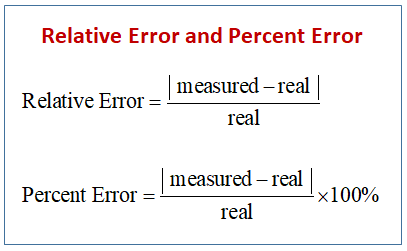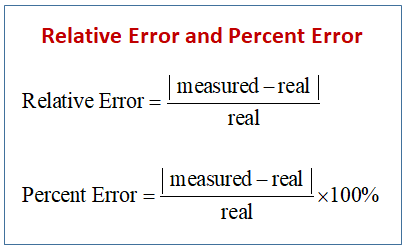When working with measurements and calculations, errors are almost unavoidable. The percent error formula calculator helps us understand how far off an estimated or measured value is from the actual value, expressed as a percentage. This tool is very useful in science, engineering, finance, and even everyday scenarios like cooking or shopping to evaluate accuracy.
What is Percent Error?
Percent error tells us the size of the error relative to the actual value, showing how precise or close the estimation is. It is usually expressed as a positive percentage regardless of whether the estimation is higher or lower than the true number.

The Percent Error Formula
The formula to calculate percent error is:Percent Error=∣Estimated Value−Actual ValueActual Value∣×100\text{Percent Error} = \left| \frac{\text{Estimated Value} - \text{Actual Value}}{\text{Actual Value}} \right| \times 100Percent Error=Actual ValueEstimated Value−Actual Value×100
The absolute value (denoted by | |) ensures the result is always positive.
Multiply by 100 to convert the decimal into a percentage.
How to Calculate Percent Error Step-by-Step
To use the formula, follow these simple steps:
Subtract the actual value from the estimated value. Ignore any negatives by taking the absolute value.
Divide the result by the actual value.
Multiply by 100 to turn it into a percentage.
Add the % symbol to show it is a percentage.
Example Using Percent Error Calculator
Suppose the actual length of a rope is 50 cm, but it is measured as 48 cm. The percent error calculator would work as:
Step 1: |48 - 50| = 2
Step 2: 2 / 50 = 0.04
Step 3: 0.04 × 100 = 4%
So, the percent error is 4%, meaning the measured length is 4% less than the actual length.
Why Use a Percent Error Calculator?
A calculator makes this process much faster and reduces the chances of mistakes, especially with complex numbers. Also, some errors might be very small decimals, so using a calculator ensures an accurate percentage.
Important Notes
Percent error gives an idea of accuracy, but always assumes the actual value is correct.
A smaller percent error means measurements are very close to the true value.
If the percent error is zero, the estimated value is the same as the actual value.
Percent error formula is handy for experiments, quality tests, finance predictions, or any form of measurement validation.
Useful Links for More Understanding
Learn more on Cuemath’s detailed article on the percent error formula and calculator: Percent Error
Try an online percent error calculator and see instant results here: Calculator Soup Percent Error Calculator
Study.com provides clear definitions and examples on percent error: Study.com Percent Error Lesson
Summary
In simple terms, the percent error formula calculator helps you figure out how far off your estimates or measurements are from what they should be quickly and easily. Understanding this helps to evaluate accuracy and improve measurement techniques in many fields.
By using the formula:Percent Error=∣Estimated−ActualActual∣×100\text{Percent Error} = \left| \frac{\text{Estimated} - \text{Actual}}{\text{Actual}} \right| \times 100Percent Error=ActualEstimated−Actual×100
and applying step-by-step calculations or simply using a calculator tool online, anyone can determine percent error with ease.
